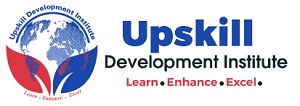Introduction
R Statistical software for data visualization and data analysis, used by researchers, statisticians, & data miners for quantitative data analysis. Statistical Data Management and Analysis using R course provides an insight into quantitative data management and analysis (exploring, summarizing, statistical analyzing, visualizing). R is an open source software with many features for quantitative data management and analysis. Making Sense of Data is an important skill. Our modern world is a complicated place, and we are bombarded by data at every turn. The first step to understanding and making sense of data is being able to summarise data.
R is a programming language and software environment for statistical computing and graphics. The R language is widely used among statisticians and data miners for developing statistical data analysis. You will start with the most basic importing techniques and advanced ways to handle even the most difficult datasets to import. R has “become the de-facto standard for writing statistical software among statisticians. This course will give you a solid foundation in creating statistical analysis solutions using the R language, and how to carry out a range of commonly used analytical processes. Finally, you will learn to implementation and data analysis.
Related course – click the course title to view the course outline
o Research Design, Mobile Data Collection and Data Analysis using R and Nvivo Course
Duration
5 days
Who Should Attend?
Statistician, analyst, or a budding data scientist and beginners who want to learn how to analyze data with R,
Course Objective:
o Introduce participants to R as a quantitative data analysis tool
o Enable learner master R software and R-studio as a user interface
o Enable learner import data from various sources
o Introduce basic statistics for exploratory data analysis including methods for describing and summarizing variable distributions
o Provide essential skills for data manipulation including selecting subsets and recoding
o Introduce the visual representation of variables in scatter graphs, bar charts, and histograms
o Import and export data in various formats in R
o Perform advanced statistical data analysis
o Enhance your data analysis skills and learn to handle even the most complex datasets
o Learn how to handle vector and raster data in R
Course content
Introduction to Statistical Analysis
- Explain the basic steps of the research process
- Explain differences between populations and samples
- Explain differences between experimental and non-experimental research designs
- Explain differences between independent and dependent variables
Introduction to R software for statistical computing
- Overview of the R Studio IDE
- Installing, loading and updating R packages
- Creating objects in R
- Data types
- Data structures
- Sorting vectors and data frames
- Directory management commands
- Direct data entry in R (for small data sets)
- Importing data from other software
- Decision structures (if, if-else, if-else if-else)
- Repetitive structures (for and while loops)
- Other important programming functions (break, next, warn, stop)
Data Wrangling and Cleaning in R
- Working with variables
- Transform continuous variables to categorical variables
- Add new variables to data frames
- Handling missing values
- Sub-setting data frames
- Appending and merging data frames
- Spit data frames
- Stack and unstack data frames
Explanatory Data Analysis (EDA) in R
- Creating tables of frequencies and proportions
- Cross tabulations of categorical variables
- Descriptive statistics for continuous variables
Data Visualization using R base package
- Introduction to graphs and charts in R
- Customizing graph attributes (titles, axes, text, legends)
- Graphs for categorical variables
- Graphs for continuous variables
- Graphs to investigate relationship between variables
Mean Comparison Tests in R
- One Sample T Test
- Independent Samples T Test
- Paired Samples T Test
- One-way analysis of variance (ANOVA)
Tests of Associations in R
- Chi-Square test of independence
- Pearson’s Correlation
- Spearman’s Rank-Order Correlation
Predictive Regression Models using R
- Linear Regression
- Multiple Linear Regression
- Binary Logistic Regression
- Ordinal Logistic Regression
Training Approach
This course will be delivered by our skilled trainers who have vast knowledge and experience as expert professionals in the fields. The course is taught in English and through a mix of theory, practical activities, group discussion and case studies. Course manuals and additional training materials will be provided to the participants upon completion of the training.
Tailor-Made Course
This course can also be tailor-made to meet organization requirement. For further inquiries, please contact us on: Email: training@upskilldevelopment.com Tel: +254 721 331 808
Training Venue
The training will be held at our Upskill Training Centre. We also offer training for a group at requested location all over the world. The course fee covers the course tuition, training materials, two break refreshments, and buffet lunch.
Visa application, travel expenses, airport transfers, dinners, accommodation, insurance, and other personal expenses are catered by the participant
Certification
Participants will be issued with Upskill certificate upon completion of this course.
Airport Pickup and Accommodation
Airport pickup and accommodation is arranged upon request. For booking contact our Training Coordinator through Email: training@upskilldevelopment.com, +254 721 331 808
Terms of Payment: Unless otherwise agreed between the two parties payment of the course fee should be done 3 working days before commencement of the training so as to enable us to prepare better

